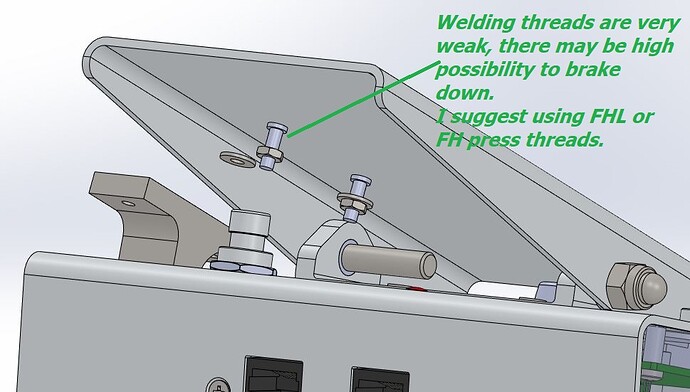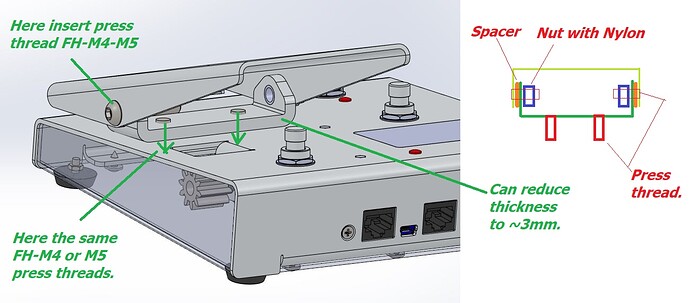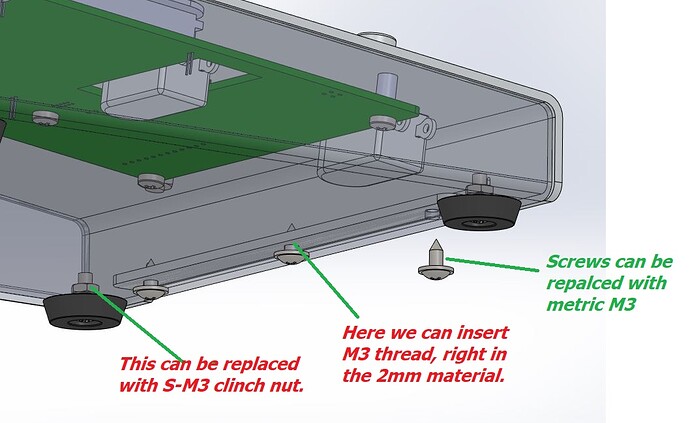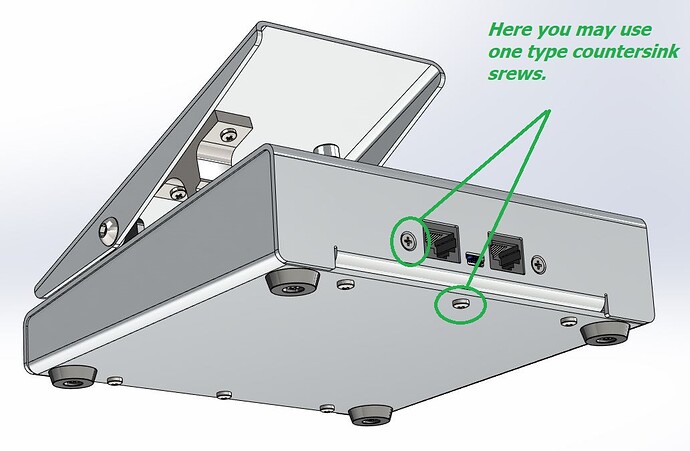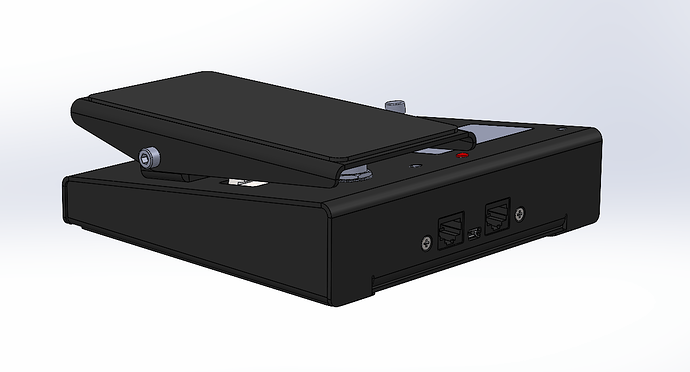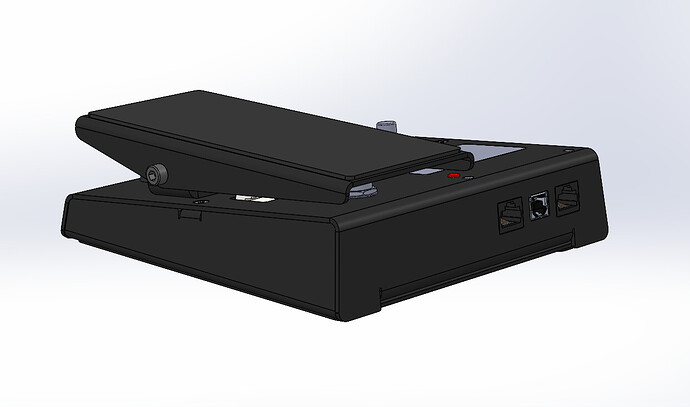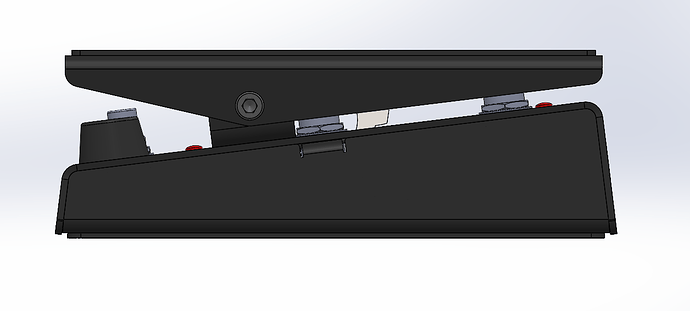Hi, thank you for the fast answer. But i mean the way like Line6/strymon does behind the midi plug in. You can additionally take, if you need it, cheeper and easy Footswitches with jack plug in. For some extra function. I hope it´s understandable? 
As far as I know, the features for the MOD Expression pedal are closed for a while and they do not include a MIDI port (only control chain).
This may be something to be considered in a future version.



Like maybe after this one starts to ship??
Exactly we will not start working on a new version without shipping the previous one
Got my first COVID-19 shot yesterday! I’m beginning to think that I MIGHT just live long enough to play out again.
In honor of the occasion I’ll ask the usual question:
???
Congrats on the shot 

Sorry if I’m missing something, but what is the usual question? Regarding updates on the Expression pedal?
Sorry Jon. I should have been more specific - I was really just asking the same question we’ve been asking for quite a while now - an update on the progress on the expression pedal. Have you gone to the new enclosure supplier yet and what’s the status of the process of fabricating the enclosure to finished product. I know there are uncertainties and unforeseen problems, but where are we?
Speaking only for me personally - I get my 2nd shot on March 31 and I’m looking to get out and start playing in public again by end of May. Won’t be using the entire chain (duo, footswitch extender and hopefully exression pedal and a Morning Star MC6) until I get actual paying gigs with a new band, but I’ve got a serious case of “cabin fever/ I JUST WANNA PLAY AGAIN”. With the availability of the vaccine and the prospect of things starting to open up (SAFELY!!) again I’m seeing what I believe to be the proverbial “light at the end of the tunnel”. I just hope it’s not another wave of some COVID mutation!
Thanks to all you folks for your efforts. As a former (emphasis on FORMER) software developer I know all too well the frustrations on the development and production end. In my case it’s usually been at least as great as that felt on the end-user side of the equation.
Hey Dave, I’ve been working a lot on the expression pedal recently. I’ll give a more detailed update tomorrow
Thanks James!
So as I mentioned in the last update, we’re already talking with the new supplier. I have been exchanging CAD files and drawings with them and they have been making some suggestions to make the product better suit their workflow and to improve the manufacturability of the parts. I’ll share some of those suggestions
Most of the suggestions are related to fixings and hardware. The manufacturer has press machines which can be used to press self clinch fixings into the sheet metal which opens up some opportunities to make the design cleaner with less parts to assemble.
Some of the suggestions such as this change to the main pedal bolt were rejected because it would impact the strength and alignment of the pedal. We want it to be Sturdy!
These last 2 images have some nice suggestions which sparked a bigger conversation which went like this:
- We have rubber feet which are attached with a bolt and nut
- The new supplier can attach a nut to the sheet metal to make assembly easier
- Why do we even have a bolt? lets go for a foot can just press into the hole?
Then when I saw this, I thought well the countersink holes cost more… but actually that would be nice for users who want to put the device on a pedal board so the bottom should be flat so they can apply velcro etc
This led to the thought that the press in feet will be annoying to remove for these users and will leave an empty hole behind
Then I thought, well we solved this for the Dwarf with the velcro and rubber grip strips. Why not keep it consistent and do the same for the expression pedal? We put a survey out to Dwarf users and the overwhelming response was to just include both options in the box so the user decides which one they want to use and attach it themselves like a sticker. This is both ideal for the user and easier assembly so it’s a win win.
We will need to do some testing to see if you still get enough grip on different surfaces (such as carpet in rehearsal studios)
One last thing we discussed here was that since we were changing suppliers, if we really want to change anything else about the design then now is the time.
Well most importantly we don’t want to keep dragging the project out so we will not make any major design changes but one thing that was bothering us and starting to feel quite outdated was the USB mini jack. So we will likely change that to USB type B
So basically I’m just updating the design with the minor changes and continuing the discussion with the new supplier and will push for a sample very soon. In the end after all this mess with the previous supplier, we should now be looking forward to a much cleaner design and more updated product without sacrificing to much time
Let me know what you think
Great update! This level of transparency is hugely appreciated.
Personally I would definitely want the option of either mounting it on my pedalboard (for which I would use 3M Dual Lock not velcro, BTW, although it’s basically the same process involving adhesive strips) or keeping it separate on the floor with rubber feet.
Also, was there any particular reason for not going with USB type C? Type B is also outdated, and type C has significantly superior specs AFAIK. I guess one question around type C is whether it would be robust enough given that it’s quite a bit smaller and might not stand up as well in the face of force perpendicular to the socket direction. I assume you meant the full size type B like what’s on the Duo and Dwarf, rather than mini B or micro B.
I personally really like the 3M Dual Lock as well so I would probably do the same. We won’t include that though because it’s less common and more expensive. I will however, make the included strips a standard size (probably 1 inch / 25mm) so that you could exchange with 1 inch dual lock.
Eventually I would like to move all future devices to USB C but to really take advantage of the superior specs, we would need to spend some time with research and development. With the current configuration I don’t think it would provide any benefit other than being reversible. You are correct, it would be the full size type B. I think it’s the most logical option because it’s so common among music gear and we have a nice customised braided cable we developed for the Dwarf 
Excellent news!
A little update after some design changes. The Expression Pedal is now looking a bit more refined, a bit more sturdy and a bit more practical with the USB port change
↑↑ Before ↑↑ ↓↓ After ↓↓
It has some slick angles now and some grip strips on the bottom
The files were already sent to the manufacturer last week to investigate and get a start on a sample
Still a fe details to sort out but it is progress
Nice that you’ll go for a more robust usb port 
i am so doing my best to not be cynical … but it’s hard to get exited about switching to a usb B port …
if the design keeps changing we will never get the pedal
please, just build the frigging thing !!
I think it’s still a control chain device>
But they need USB for firmware updates.
exactly : you only use the usb to upgrade the firmware and this is not something you will do on a dark stage (right next to a couple of plastic cups filled with warm beer that can tip over any moment) where ‘robust’ does indeed make sense. You will do this once every couple of months at home on you table
I can assure you that changing the USB port is not the bottleneck for getting the device made so don’t worry about that
The change is more based on how common the connector and cables are. It’s the same connector used on the Dwarf and will use the same cable we provide with our other devices so in the end we have less parts to procure resulting in shorter lead times for procuring the BOM and higher volumes which result in lower costs
Also the design change means that the jacks are mounted on the same PCB as all the other components. We completely eliminated the need for the seperate IO board so there is now only one PCB meaning lower costs and faster to procure and produce
So basically you can enjoy a cheaper device, shorter production time and a stronger connecter that uses a more common cable. Everybody wins
